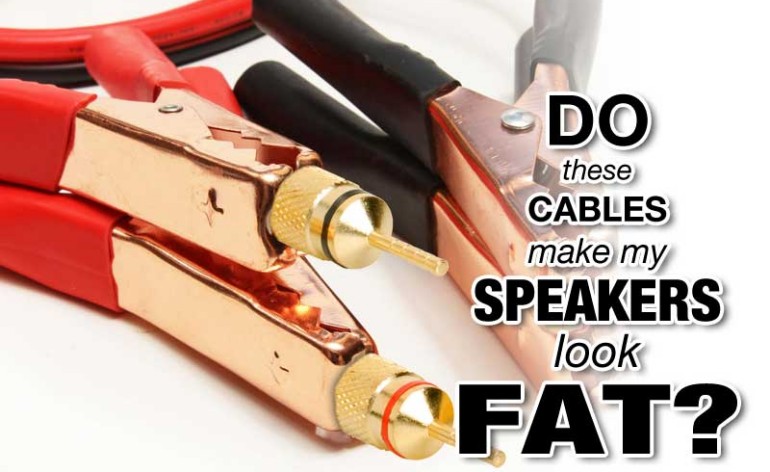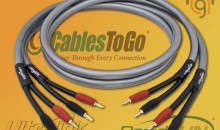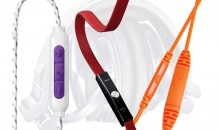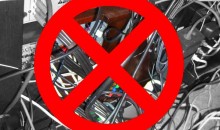How Much Should I Spend on Speaker Cables?
For a long time speakers cables were simply zip cord, or lamp cord that connected your behemoth speakers to your amplifier r head unit and produced audio. Then something interesting happened. Companies like Monster Cable came along and turned the speaker cables in your home theater into rock stars worthy of respect and admiration…at least to some. To the rest of us, we knew that speaker cables had something to do with audio fidelity, but not as much as the new generation of audiophiles and big spenders would have you think. So, the question most people still have remains: How much should I spend on speaker cables?
As it turns out: Only as much as you need to.
Factor in the Distance
If you’re only talking about the distance from your AV receiver to your front speakers, the amount you should spend could go either way. On the one hand, you can spend more per foot because you aren’t buying all that much cable (more on that later). On the other hand, you’re not suffering the effects of frequency roll-off from extra long cabling either. That means you don’t need to spend much and can likely get by with basic 16- or 14-gauge wire. So which is it? It all depends on your goals.
If you’re running greater distances with your speaker cables, like multi-zone or surround or multi-zone applications, then you’ll want to ensure you have the correct gauge for the application. We’ve covered this in our article entitled What is speaker cable gauge, but suffice it to say that having a thicker wire will allow you a longer run without rolling off the high end frequencies.
Looks Matter…Sometimes
Some people use fancier cables to dress up their system and make it look nicer. After all, if you just spent $5,000 on speakers, it may not be all that glamorous to run cheap zip cord across your floor. You may want to opt for fancier speaker cables or something that can bi-wire your speakers. Where we draw the line is with cables and manufacturers who make outlandish claims. Some manufacturers use scientific terms to describe certain cable artifacts that really only affect frequencies well above the range of human hearing. Other claims are based around scientific phenomenon that, once again, have no bearing on audio frequencies in cables. Resistance, inductance and capacitance—those are the trifectas of sonic cable nirvana. Get those three metrics in perfect balance and you’re off to audiophile bliss. Mess one or more up—or compromise because of some fancy cable design—and you’ve got a mess.
Watch Out for EQs Masquerading as Speaker Cables
One of the things that can happen when one of those three metrics gets out of balance is that the speaker cable can begin to function as an EQ. If you ever hear speaker cables described as “warm” or “revealing” this is likely what’s going on (that or the reviewer is simply waxing poetic). Speaker cables aren’t (or shouldn’t be) designed to sound like anything. They’re speaker cables. They should simply transmit undoctored sound from the amplifier to the speaker. Speaker cables are not designed to act as tone controls or a device which in any other way distorts or affects the analogue sound output by an amplifier.
The Best Speaker Cables Are…
The best speaker cables are ones that a) have the look you want for your aesthetic needs, b) match the budget you have for your system, and c) provide a ruler flat frequency response from 20Hz to 25kHz (or more). It’s not difficult to shop for speaker cables, but it can be confusing when you’re faced with all of those options. Most of the time, the choices are largely aesthetic in nature. Recognize this and you’ll be off to a good start. While running 100 feet of 24 gauge cable is not going to yield great sound in your second zone, an 8-foot run of 12-gauge cable is going to sound just as good as any $5,000/pair of audio jewelry you’ll see advertised in a high end magazine or showroom floor. That’s a guarantee. As Chief Engineer Montgomery Scott from Star Trek would say, “You canno’ change th’ laws of physics!”
Happy speaker cable shopping!







Best buy and Frys
Sales people are the worst when it comes to
This
Buy Blue Jean Cables. Great quality, no snake oil claims, reasonable prices. Fast shipping!
I could easily tell the difference between the 12ga. Monster Cable I had many years ago and the Kimber Kable I currently use. Even my wife could hear the difference, and she could care less.Read more…
My goodness. A bit touchy aren’t we? 🙂 As you said, they were opinions and you can make your own choices, and I didn’t think the writer was trying to shove the opinion down anyone’s throat.Read more…
Joe, I’m very glad you use Kimber Kable, it’s an excellent product. WBT connectors that Kimber uses are among the best.Read more…
@Ron despite Audiogurus continues to use the Audioholics name I wanted to make it clear that the folks at Audiogurus do NOT write for or in any way affiliated with Audioholics.com.Read more…
I’ve always enjoyed MIT cables. Work great for my ears.
@Gene, I always felt a little suspicious of a company that reviews audio and video gear then turns around and sells said equipment. Made the reviews feel a bit tainted. Thank you for clearing that up.Read more…
If you want your speaker cable to be audio jewelry then you can buy as expensive cable as your budget allows.
If you want your speaker cable to do the job required for the length of cable needed then this article is quite honest. Short distances 16 gauge is going to be fine, but if you like a bit more bulk or a need a bit more length then 12 gauge cable most often found at modest retail prices is all you need.
Fancy speaker cables, interconnects, HDMI cables, Coax/Fiber optic cable, power cords 🙁 is all really a man’s version of a woman and her expensive jewelry, or her fancy branded dress shoes, Generally USELESS to price to paid, but can look beautiful/stunning, be a conversation piece, is ego massaging and can cause envy to weak minded people.
Nothing wrong with buying cables because they look good. If you have the type of system where the cables will be visible, there is a real reason to get something more aesthetically pleasing.